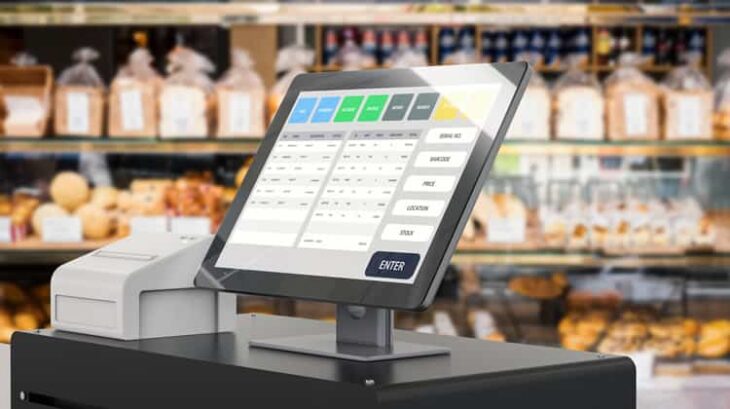
Maximising Efficiency: How All-in-One POS Systems are Simplifying Restaurant Operations
In the fast-paced world of hospitality, restaurant owners and managers are always looking for ways to streamline their operations and maximise efficiency. One of the most effective solutions to this challenge is the implementation of all-in-one POS systems.
These systems have become increasingly popular in recent years, as they offer a wide range of benefits that can help restaurants of all sizes to run more smoothly and efficiently.
Advantages of All-in-One POS Systems
A complete solution for restaurant operations is offered by all-in-one POS systems. They often contain hardware like touchscreen screens, printers, and scanners as well as software for managing orders, payments, inventory, and customer data.
All-in-one POS systems, which combine all of these features into a single device, have the following major advantages over conventional POS systems:
- Streamlined Operations: With all of your restaurant’s data and functions in one place, all-in-one POS systems can help to simplify your operations and reduce the time and effort required to manage them. This can lead to faster service, fewer errors, and improved customer satisfaction.
- Increased Efficiency: All-in-one POS systems can help to automate many of the tasks that are typically performed manually, such as taking orders, processing payments, and managing inventory. This can free up your staff to focus on other tasks, such as preparing food and interacting with customers, which can improve the overall efficiency of your restaurant.
- Improved Accuracy: By eliminating the need for manual data entry and reducing the risk of errors, all-in-one POS systems can help to ensure that your orders are processed correctly and that your inventory is managed accurately. This can reduce waste, improve profitability, and enhance the customer experience.
- Enhanced Reporting: All-in-one POS systems can provide detailed reports on sales, inventory, and customer data, which can help you to make more informed decisions about your restaurant’s operations. This can help you to identify trends, track performance, and make adjustments to your menu, pricing, and marketing strategies as needed.
Choosing the Right All-in-One POS System
When selecting an all-in-one F&B pos system for your restaurant, there are several factors to consider. Here are some key considerations to keep in mind:
- Size of Your Restaurant: The size of your restaurant will play a significant role in determining the type of POS system that is right for you. Larger restaurants may require more advanced features, such as table management and multiple order stations, while smaller restaurants may only need basic functions such as order taking and payment processing.
- Cost: All-in-one POS systems can vary widely in price, depending on the features and capabilities they offer. It’s important to choose a system that fits within your budget, while also providing the functionality you need to run your restaurant efficiently.
- Ease of Use: A user-friendly interface is essential for any POS system, as it can help to reduce training time and improve staff productivity. Look for a system that is easy to navigate and intuitive to use, with clear instructions and minimal downtime.
- Integration with Other Systems: If you use other software systems in your restaurant, such as accounting for inventory management software, it’s important to choose an all-in-one POS system that can integrate with these systems seamlessly. This can help to streamline your operations and reduce the risk of errors.
Getting the Most Out of Your All-in-One POS System
Once you’ve chosen a F&B pos system for your restaurant, it’s important to make the most of its features and capabilities. Here are some tips to help you get the most out of your investment:
- Train Your Staff: Proper training is essential for any POS system, as it can help to ensure that your staff can use the system effectively and efficiently. Be sure to provide comprehensive training on all aspects of the system, including order taking, payment processing, and reporting.
- Customise Your Menu: All-in-one POS systems can provide a wide range of customisation options for your menu, including the ability to add images, descriptions, and pricing. Take advantage of these features to create a menu that is easy to navigate and visually appealing.
- Use Analytics to Make Informed Decisions: All-in-one POS systems can provide detailed analytics on sales, inventory, and customer data. Use this information to make informed decisions about your restaurant’s operations, such as adjusting your menu, pricing, or marketing strategies.
- Leverage Mobile Capabilities: Many all-in-one POS systems offer mobile capabilities, which can allow your staff to take orders and process payments from anywhere in your restaurant. This can help to reduce wait times and improve customer satisfaction.
- Keep Your System Up-to-Date: It’s important to keep your all-in-one POS system up-to-date with the latest software updates and security patches. This can help to ensure that your system is running smoothly and securely, while also providing access to new features and capabilities.
Conclusion
Restaurant operations are changing as a result of all-in-one POS systems, which provide numerous advantages that can assist to improve efficiency, reorganise processes, and improve the clientele’s overall experience.
Owners and managers of restaurants can increase their return on investment and advance their operations by selecting the ideal system and utilising all of its features and capabilities. An all-in-one POS system may support your success in the competitive hospitality industry, whether you’re managing a tiny café or a big restaurant.
